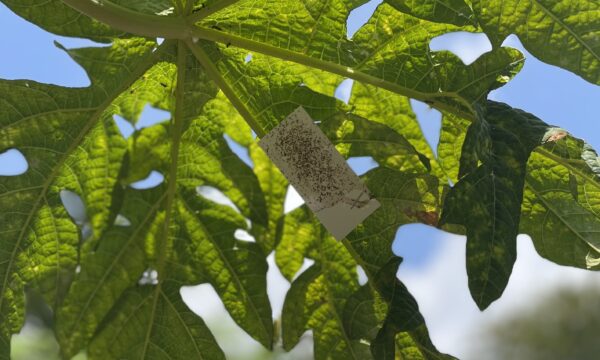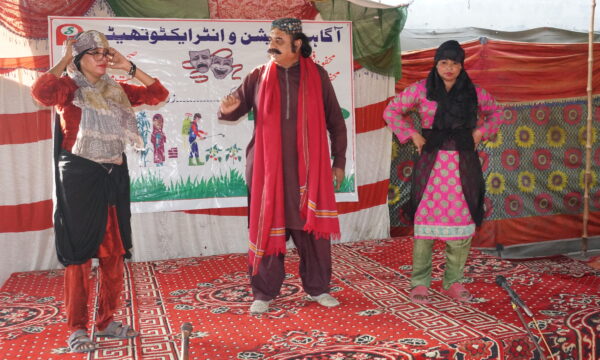
The biodiversity of non-cropped areas can benefit farmers © Maggi_94 (CC BY-NC-SA 2.0 license)
Last week, Professor Tim Benton, the UK Global Food Security programme ‘champion’, wrote a guest blog post about ecosystem services and the need for sustainable intensification of agriculture. This week he follows on from this by looking at how farmers can integrate protection of ecosystem services into their land management without losing out finanically.
Provision of habitat is required to support beneficial animals (like bees, hoverflies and other pollinators, and small wasps and flies, which provide natural pest control) as well as animals and plants of cultural importance (e.g. butterflies, birds, mammals, meadow flowers). Furthermore, wooded non-production habitat can supply a range of additional services including providing habitat, timber, carbon storage and influencing the water cycle by affecting rainfall, as transpiration may contribute to cloud formation in some parts of the world. Non-production areas are also used as an intervention to reduce run-off improving water quality. They also directly impact on the “look” of the landscape, and directly contribute to its cultural value through this route (NEA, 2011). Many of the ecosystem services provided by the non-production land have none or marginal economic benefit for the local landowner, but considerable importance for society as a whole. Thus, similarly to the tragedy of the commons, if the societal benefits accruing from the non-production areas are not recognised and such areas not actively managed, then there is a risk to the service provision as a whole. Maintaining functioning ecosystem services requires concerted actions across large areas. However, if every farmer ignores the needs of the birds and the bees, the “tyranny of small decisions” (Odum, 1982) leads to the large-scale erosion of their habitat, their populations and the services they provide.
The challenge then becomes how best to manage the habitat for providing ecosystem services in a way that doesn’t challenge the farmers’ abilities to gain economic rewards. Firstly, on most farms there are a range of landscape elements which are non-cropped areas (e.g. field margins, hedgerows, ditches). With the increasing use of precision farming techniques (such as yield monitoring) farmers also may often identify areas which are uneconomical to farm (due to local soil, drainage or access constraints). Secondly, farmers may benefit directly (in production terms) or indirectly via maintaining some non-cropped areas for wildlife. For example, the beneficial insects (such as pollinators and natural pest control agents) typically require non-cropped habitat for nesting and over-wintering. Thus, if farmers maintain grassy margins, they may reduce the incidence of aphid outbreak in the adjacent arable fields, and therefore require less plant protection products. Similarly, marginal strips may act as cover crops for shooting purposes, buffer strips for preventing soil erosion and run-off of synthetic nitrogen (and the potential regulatory costs imposed). Non cropped areas can potentially provide other services, such as production of domestic fuel in terms of timber, and for many farmers, there are non-economic gains that can arise from public perception of the positive impacts of stewardship on the countryside (NEA, 2011). Thus, farmers managing their own land to provide a diversity of services that may provide some benefit for themselves. If every farmer does the same, the tyranny of small decisions is reversed as the small parcels of spared land, managed for services, contributes to a landscape-wide integrated, heterogeneous, network of habitat that can provide the benefits both to themselves and to society as a whole.
However, as yet, this is a pipe-dream. We need to develop the understanding and evidence base that non-cropped areas are not just weedy areas simply providing weeds and pests that harm the farmers, but can be managed to positively contribute to farm activities. Once we have this knowledge sustainable intensification becomes possible.
NEA, U., 2011. The UK National Ecosystem Assessment. Synthesis of the Key Findings.
Odum, W.E., 1982. Environmental degradation and the tyranny of small decisions. Bioscience 32, 728-729.
The views given in this blog post are those of the author and do not necessarily reflect those of Plantwise or CABI.
3 Comments
Leave a Reply
Related News & Blogs
‘Sowing the seeds’ for food security in Uganda: CABI supports training for Quality Declared Seed production
CABI has been working with Zirobwe Agali-Awamu Agribusiness Training Association (ZAABTA), the Ministry of Agriculture, Animal Industry and Fisheries (MAAIF), the National Agricultural Research Organisation (NARO), and Integrated Seed Sector Developmen…
21 May 2025





Reblogged this on INNOVATING AGRIBUSINESS.
[…] next blog post will look at how farmers can incorporate the development of ecosystem services into their land management plans without losing out […]
Ecosystem need to be conserved. Nice article